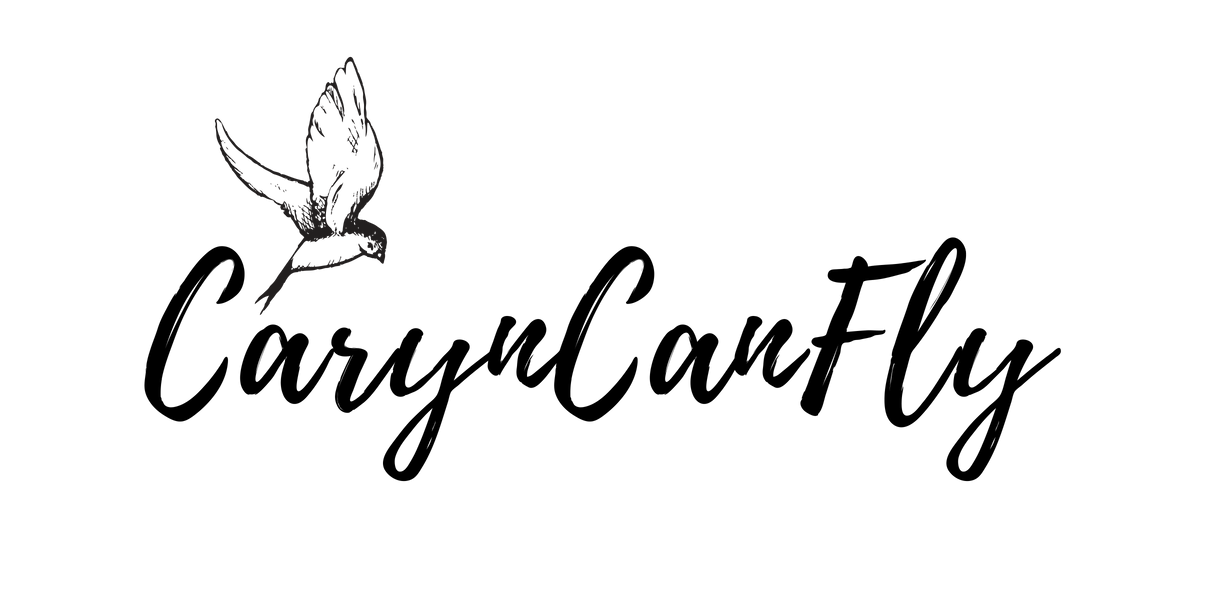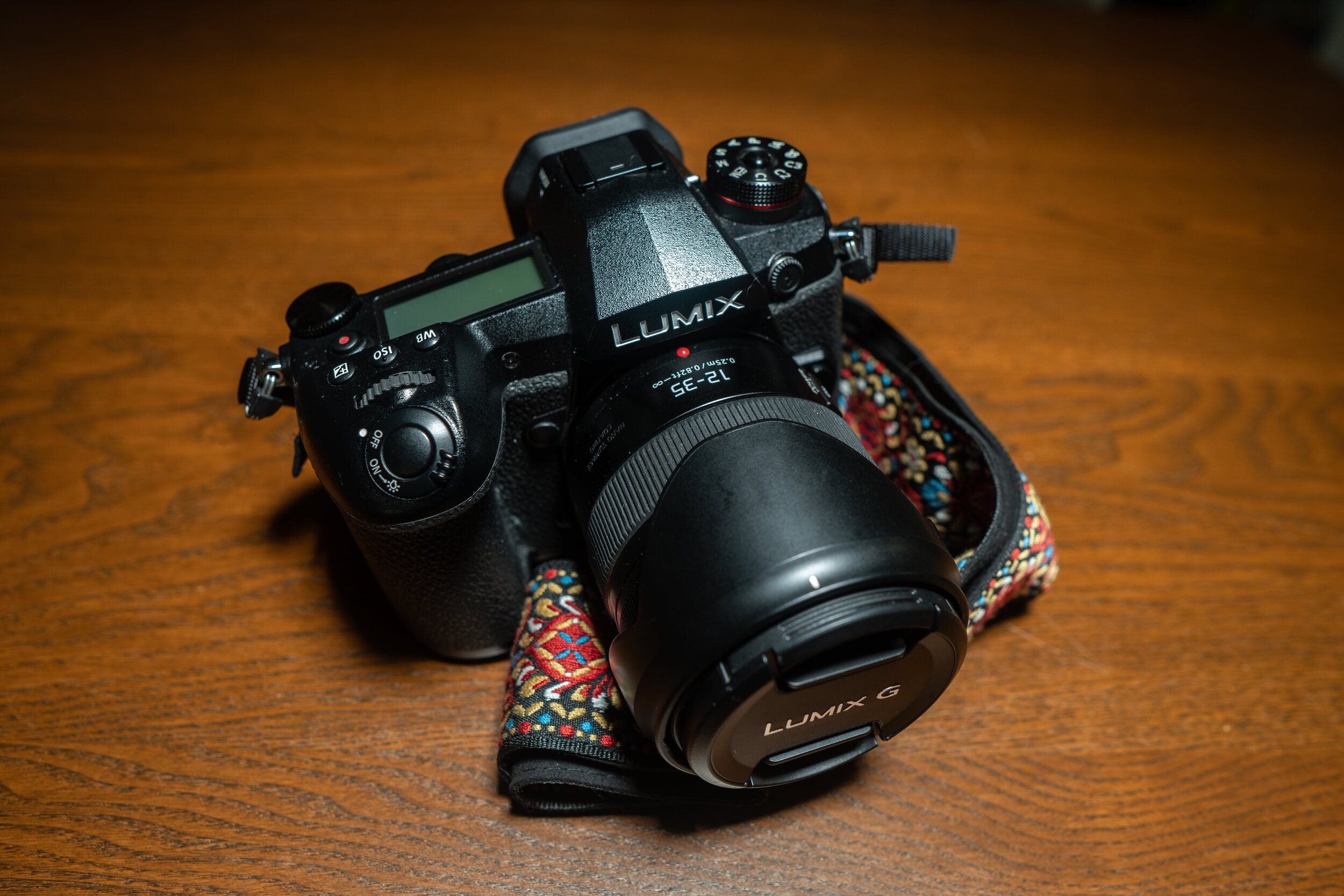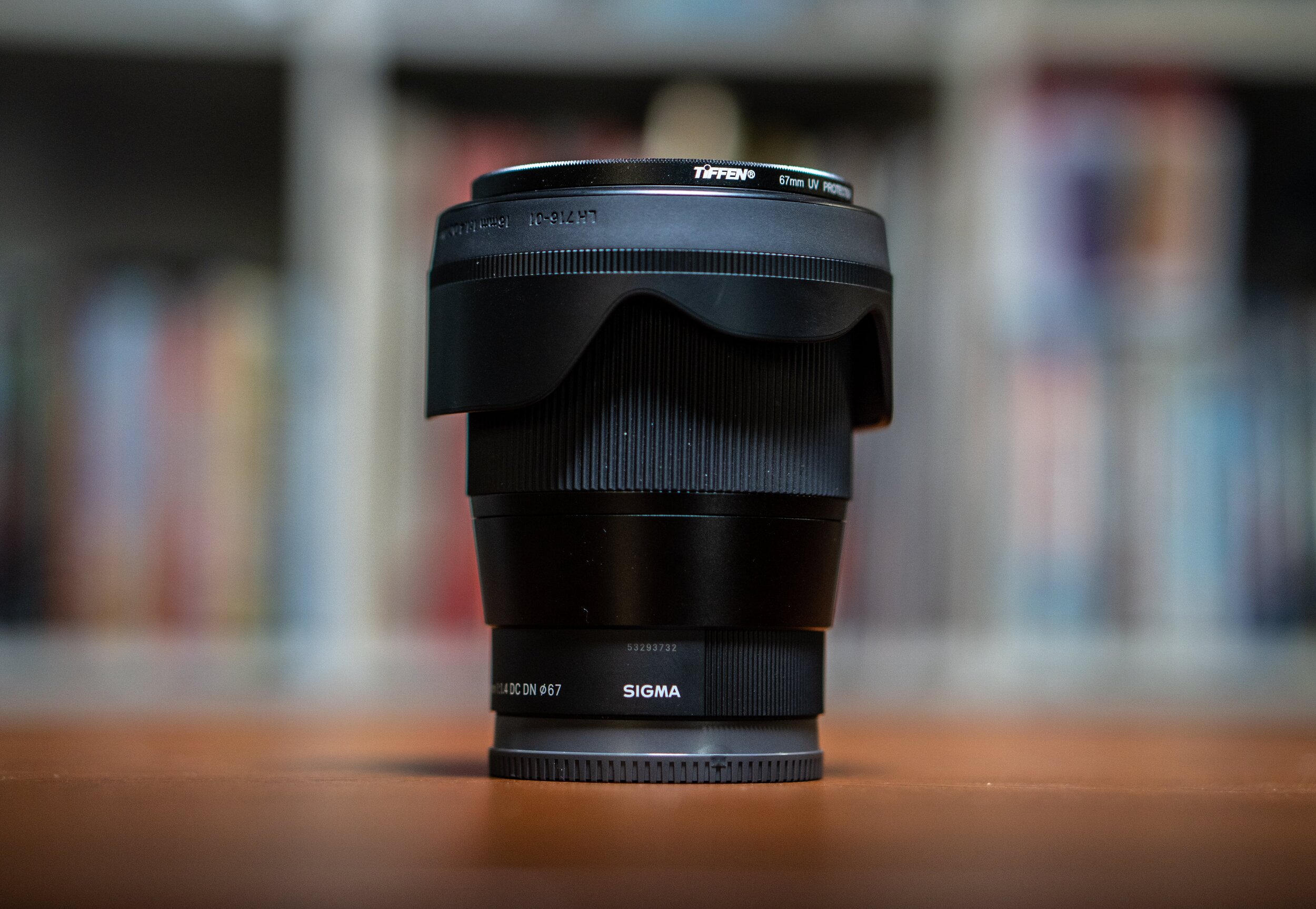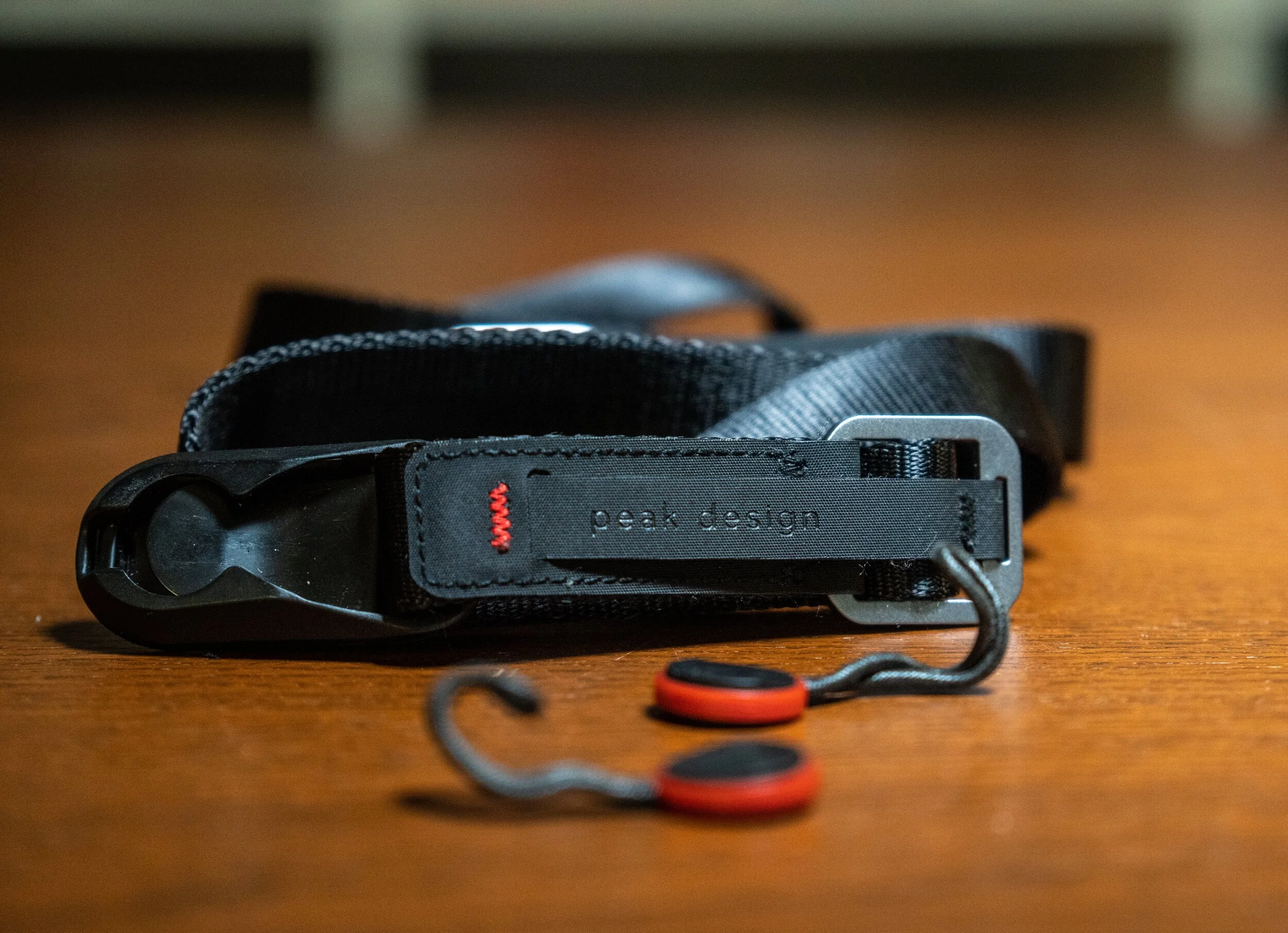Our Gear
Camera Bodies:
Lumix G9
This camera was getting a lot of attention when it first came out. But before I believe the hype, I like to get a hands-on experience first. You never really know how a camera feels or how it fits into your workflow until you personally use it. So I decided to head on over to my local camera store to try it out. When the salesman put it in my hands for the first time, I was immediately pleased. It just felt right. The grip is comfortable and fits right into my hand, not too small or too big, and it feels very natural to use. My favorite feature of this camera by far is the central eye piece. You can easily use either eye in the viewfinder, which is nice because I can use my left eye without shoving my face into the back of the camera and poking the screen with my nose (this happens to me often!). There is also a joystick that is extremely useful for changing your focus point, even while looking through the viewfinder. The mode dial locks in place so you never accidentally switch shooting modes. It’s also very easy to change every setting, so you never get caught up in the menus trying to make adjustments. There are so many things about this camera that make it easily my favorite that I’ve ever used. The specs of this camera are really good too, so I can definitely see myself using this for many years.
Sony Alpha a6600
This camera is an excellent option for someone who likes to shoot both photo and video. The best feature of this camera has to be its auto focus. The auto focus capability of this camera is phenomenal, and if you’re using the proper setting you can pretty much guarantee your shot will be in focus. This is extremely useful because the screen is not that great. It doesn’t flip out, and it reflects light like crazy so there will definitely be times when you’re pretty much shooting blind. In these situations, it’s nice to know you can count on the auto focus to keep your shot looking crisp. Another great feature is the ability to shoot in low light situations. You can turn your ISO up really high and still get a pretty clear image with minimal noise. It’s also very lightweight and has a variety of lens options available, so you will never be limited by your gear. The menu system does take a lot of getting used to, but once you figure it out it’s pretty easy to navigate. Overall if you can get passed the limitations of the screen, and the learning curve of the menu system, this camera will serve you well in any situation (except underwater, don’t do that).
Lenses:
SIGMA 16mm F1.4
This is a fantastic wide angle lens perfect for shooting landscapes and capturing the environment. This has been my go-to lens for crowded situations, because I don’t need to be too far away from my subject and I can easily keep people out of my shot. It is also a really fast lens, at 1.4 aperture you can really crank up that shutter speed without causing your image to be under exposed. Lenses this fast can struggle with sharpness, but this Sigma holds up its clarity at pretty much any setting. I am very impressed with this lens, and I highly recommend it.
Note: I don’t really recommend wide angle lenses, like this one, for portraits. This wide angle focal length can make your subject look a little funky and stretched out, so keep that in mind if you are mostly a portrait shooter.
Sigma 30mm f1.4
This lens is essentially exactly the same as the 16mm just with a longer focal length. I recommend this lens for all kinds of photography (I’ve used it for portraits, landscapes, low-light, astrophotography, etc.) because the focal length is ideal (not too close, not too far) and the ability to shoot at F1.4 means you can get a really nice blurry background. You even get a boost to take extra low light photos! On top of that, it’s extremely affordable! (It’s only $300 at the time of writing this.)
Sony Zeiss 16-70mm F4.0
The lens that I keep on my camera at least 90 percent of the time is the variable 16-70mm f/4 by Zeiss. The aperture does not open up as much as I’d like, but in most situations it’s the only lens you’ll need. You can effortlessly switch from a wide angle to a portrait-style focal length, which is extremely useful when you need to take both types of shots back to back. Trying to switch prime lenses in a pinch sometimes means missing the shot, which is a huge downer. Zeiss makes extremely high quality glass, which means a better overall sharpness across your images. Sony makes a similar 16-55mm f/2.8 lens, but it is way more expensive and you don’t get as much versatility out of it. The only added benefit is the low f-stop, so if you’re going to be shooting in low-light conditions a lot, it might be a better choice for you.
Panasonic 25mm f1.7
A beautiful lens for almost any occasion. I’ve taken incredible portraits, landscapes, pet photos, and detail shots with this lens and loved every second of it. On a micro 4/3 camera (2x crop factor) a 25mm lens is equivalent to a 50mm focal length. This means it has the wide versatility of a ‘nifty fifty’ lens, so you will be able to use it in almost any situation. Because of this, I recommend this lens as a first purchase for anyone with a micro 4/3 camera if you want a versatile prime lens.
Panasonic 12-35mm F2.8
This is my holy grail lens. Wherever we go, this is what’s on my camera. It’s incredibly versatile. This lens allows me to zoom a little closer and a little farther than with my 25mm so I can capture most photos I want to take. I almost never feel like I need to switch out my lens. The only situations where I feel the need to use something else is for buttery-background portraits and wildlife photography. You certainly can do these things with this lens but there are other lenses that would make these things easier.
Panasonic Lumix G Vario 100-300mm f/4-f/5.6 II
This is my wildlife lens. The genius behind micro 4/3 lenses is that you can carry some serious focal length in a tiny package. This 100-300mm lens is equivalent to 200-600mm, which is a massive range. I’ve captured things that I could barely see with this lens, including bears, elk, beavers, and marmots. The most incredible thing is that it takes up only a slightly larger space than my capture-all, holy grail lens.
Other:
Peak Design Slide Strap
I never thought I’d be so excited about a strap, but this one is awesome. It offers the ability to quickly change the length of the strap with ease, so I can adjust it based on the situation I’m in. On top of that it has quick release connectors to the camera, a must-have for any strap in my opinion, so you can remove it easily when you need to. I always remove the strap when I do video work on a tripod, because a strap can really mess up a good pan.
Peak Design Capture Clip
Zack and I both have one of these on our backpacks. It’s a great tool when you need to be hands-free, but also want to be ready to capture the moment. The most use I get out of it is when we’re hiking and I keep stopping and taking pictures because of wildlife, views, or the trail is incredibly beautiful. It changed my life when I didn’t have to keep stopping and taking my camera out of my bag over and over.
Peak Design Travel Tripod in carbon Fiber
I personally own this tripod in carbon fiber, but you can cut the price almost in half if you buy it in aluminum instead! There’s a few differences between buying aluminum vs carbon fiber. I’ve gone carbon fiber because it’s my preference after years and years of owning aluminum tripods. There’s really no right or wrong answer here since there are benefits to both!
Go Pro
Any Go Pro is a solid option for travel. It’s very compact yet can still take really high quality photos and videos. There’s a reason Go Pro is the leading action camera brand on the market right now. They’re great and fun to use! If you need to get underwater shots or shoot in risky outdoor environments, then you can’t go wrong with a Go Pro!
Maybe that could be their new slogan: Don’t go wrong. Go Pro.
This is a Hero4 silver photographed above, but we actually have two Hero9 blacks that we use regularly on our travels. If you’re a professional, there are a few things about Go Pro that may annoy you like they have us (mostly settings related). They’re by no means perfect, but still a great tool in your arsenal.
DJI Mavic Pro 2 Drone
At first I thought I wouldn’t need a drone. I mean that price point is so high, is it really worth it? Yes. Definitely. You can get other drones for lower prices, but this one is pretty much perfect for what I need it for. It shoots HD 4K video, and takes high resolution photos. You have the option for a bunch of shooting modes, and you can set the drone to follow your subject automatically. It can also predict the path of your subject so it will continue following even if the subject is out of view. It utilizes radio waves to control instead of wifi or bluetooth, so you can fly this thing really far and not worry about losing signal. Although it’s not the smallest drone, it is still very compact considering all the features it has. You can fit it in a backpack with a lot of other camera gear. This has been an excellent tool to have and I highly recommend purchasing one if you’ve been thinking about it. For me, it was worth every penny.
DJI Mavic Mini 2 Drone (Not Pictured)
Yes, we actually have two drones. It seems like a lot I know! I originally only owned the DJI Mavic Pro 2, however this price point is very compelling. I wanted the Mavic Pro 2 in a smaller package and this one is pretty much exactly that. There are a few missing features, but it’s worth it for the weight (249g). If I need to carry it for a long period of time, it makes a lot more sense to bring the smaller one if I can! Not to mention that there are perks to having a drone under 250g.












